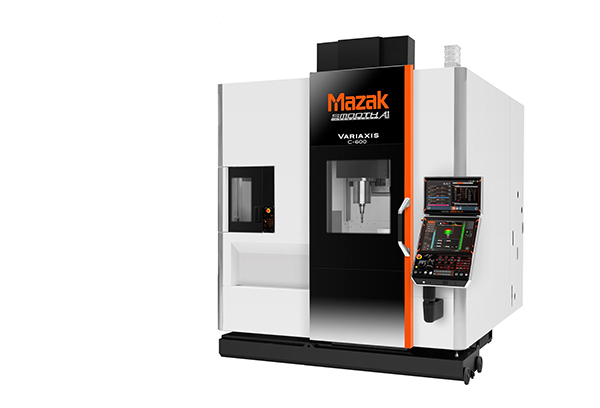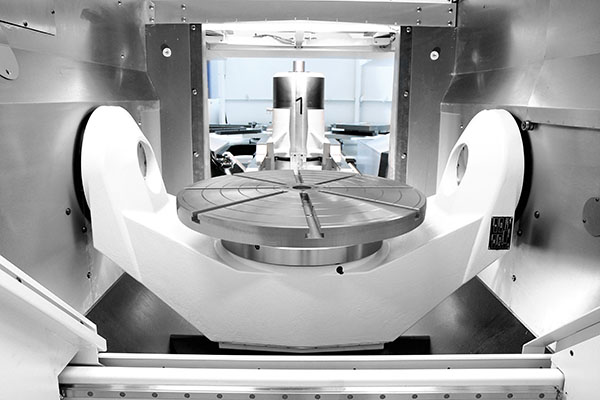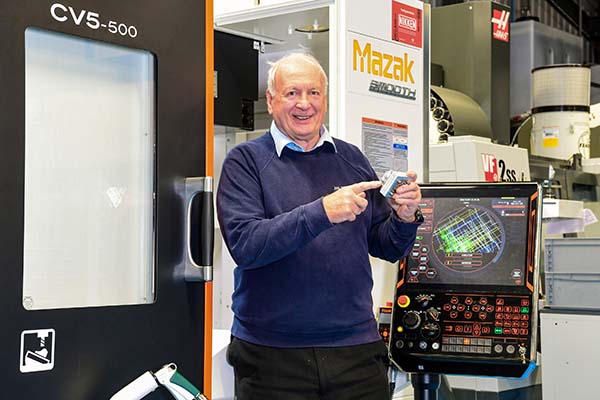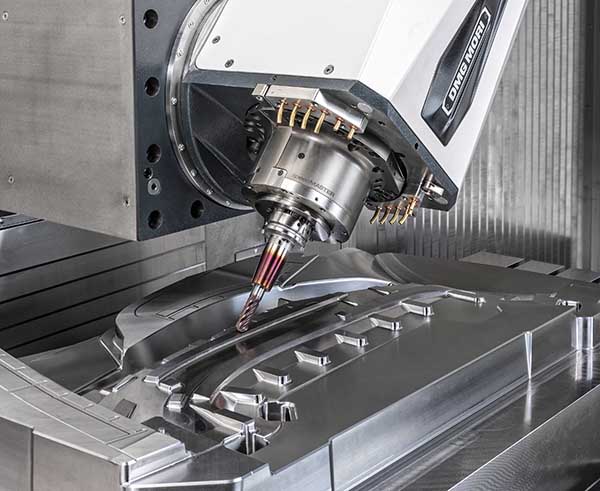
Yamazaki Mazak has unveiled a new, high-accuracy, simultaneous, five-axis vertical machining centre, the Variaxis C-600. The C-600, which is the successor to the Variaxis j-600/5X, is capable of machining workpieces up to 500 kg in weight. Among the build features is a 600 mm diameter fully supported trunnion table with roller gear cam on the B and C axes.
The machine offers 42 m/min rapid traverse rates in the X, Y and Z axes, and a chip-to-chip time of 4.5 seconds. A high-rigidity spindle can perform the heavy-duty cutting of steel, as well as the high-speed machining of other non-ferrous materials such as aluminium, as it is available with four different spindle options. Choices range from a 12,000 rpm standard variant, up to a 15,000 rpm high-torque option, or 18,000 rpm high-speed and 20,000 rpm high-power spindles. In addition, the new Variaxis features a 30-tool magazine as standard, complete with double-arm automatic tool changer. Options include 60, 90 and 120 tool magazines.
Mazak’s latest C-600 employs the company’s SmoothAi spindle function, featuring AI adaptive control that suppresses milling spindle chatter by intelligently adjusting cutting technology based on feedback from integrated machine sensors. Modularity extends to a variety of coolant packages that are available for different applications up to 70 bar pressure. Dedicated iron, aluminium and composite, and casting machining packages are also available as options.
Another noteworthy point is Mazak’s ‘Smooth Machining Configuration Plus’, which allows operators to easily adjust features that include cycle time, finished surface and machined shape on the CNC display according to material requirements. This function is especially effective for complex workpieces with contours defined in small program increments.
For further information
www.mazakeu.co.uk























